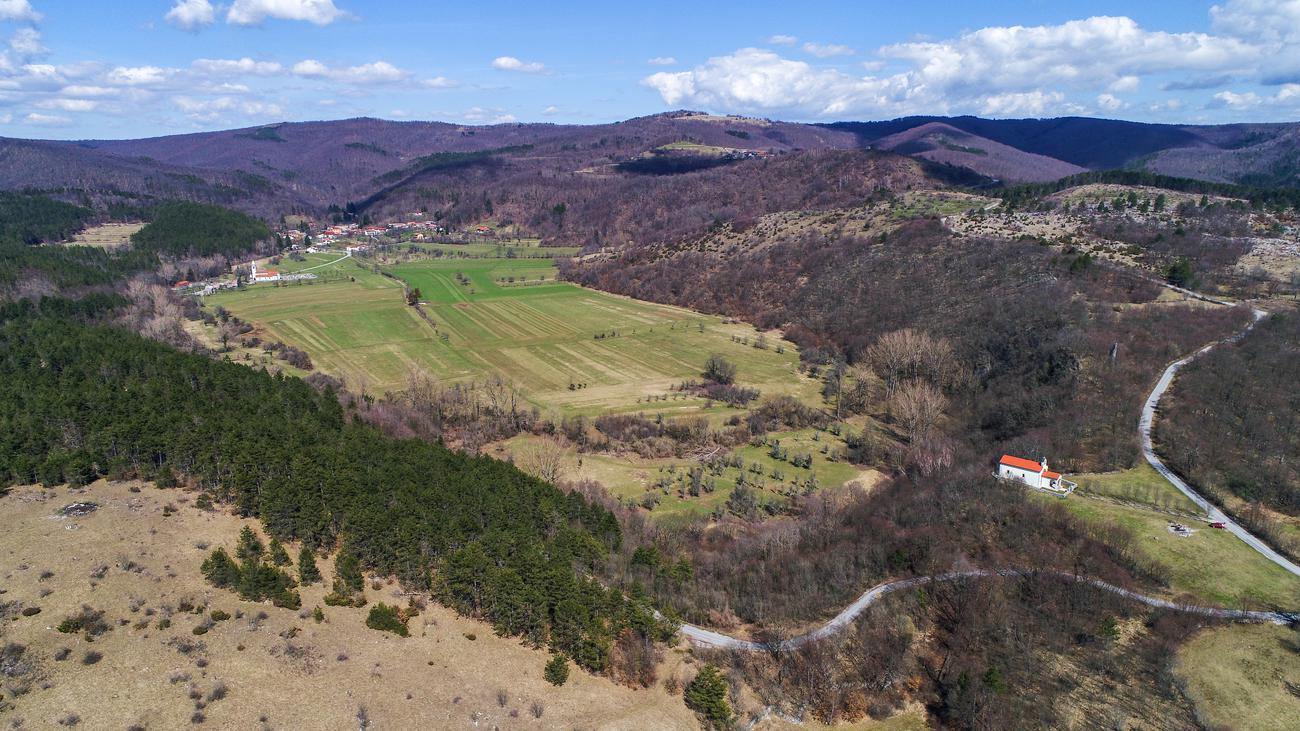
Definition
In 1895, Cvijic defined a polje as a large karst depression, with a wide, flat and nearly horizontal floor, completely enclosed between steep slopes.
White and Culver, 2012 po Cvijić, 1895
The word polje signifies a field or a large plain, and it is still widely used in Slav languages without particular reference to karstic terrain (Sweeting 1972, Roglič 1974), although poljes in the karst of Slovenia are usually called dolina or dol (Gams 1994).
Ford and Williams, 2007 po Sweeting, 1972 in Roglić, 1974
Poljes are an important component of karst, where, aside from the bottoms of major dolines, they are one of the rare formations that can support large-scale agriculture.
Gilli, 2015
polje - a large closed depression draining underground, with a flat floor across which there may be an intermittent or perennial stream and which may be liable to flood and become a lake. the floor makes a sharp break with parts of surrounding slopes.
Gillieson, 1996
Karst poljes are natural retainers of discharge surpluses and important regulators of water conditions in rivers in the lower parts of river basins.
Knez, Petrič and Slabe, 2011
Karst poljes are the largest flat-floored enclosed depressions in karst.
Mihevc, Prelovšek in Zupan Hajna, 2010
polje : In areas of karst topography, a very large closed depression, in some places several kilometers long and wide, having a flat floor either of bare limestone or covered by alluvium, and surrounded by generally steep walls of limestone. Synonym : interior valley.
Monroe, 1970
Karst poljes are large karst depressions with flat bottoms, which are the result of solutional processes and karst water drainage.
White and Culver, 2012
Poljes are the largest closed depressions observed in the karst terrains.
White and Culver, 2012
Frame
| FORM | and surrounded by generally steep walls of limestone |
| closed | |
| depressions with flat bottoms | |
| largest flat-floored enclosed depressions | |
| LOCATION | in areas of karst topography |
| in rivers in the lower parts of river basins | |
| in karst | |
| SIZE | in some places several kilometers long and wide |
| large | |
| CONTAINS | having a flat floor either of bare limestone or covered by alluvium |
| CAUSE | natural |
| result of solutional processes and karst water drainage | |
| FUNCTION | important regulators of water conditions |
| retainers of discharge surpluses | |
| draining underground | |
| they are one of the rare formations that can support large-scale agriculture | |
| COMPOSITION | karstic terrain |
| RESULT | which may be liable to flood and become a lake |